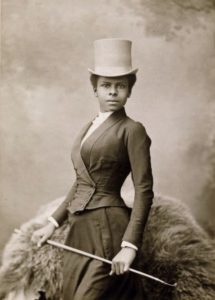The moment you realize how subtle racism can be.
The moment you realize how subtle racism can be.
As someone of Northern European ancestry, I approach this topic with caution and with the knowledge that I can never fully understand racism in America from a personal perspective. That being said, part of me knows that unless white America owns up to the problems that still exist, they will never go away, or if they do, they will not go away because of what I have done. I don’t want to be on the right side of history as a spectator.
Writing Soul’s Cry was daunting, because the main character in this part of the trilogy is African American. I’ll tackle the challenges with that in another blog. For now, I want to talk about one simple example of ongoing racism.
A few months ago, my publisher contacted me looking for inspiration pictures for the cover. The picture I had pinned to my desktop for Ione was from the 1800s, and heaven-only-knows how I would find permission to use it. Besides, it was in black-and-white, and we needed something that would go well with the other covers in the trilogy.
I went to the popular sites that cover designers use to look for modern pictures of women, in Victorian Era clothes, who had the smart, determined expression I’d imagined for Ione.
I found a bunch of models–problem is, they were all white.
I then typed in “African American Victorian Woman.” One picture. And she was dressed as a burlesque dancer. Nice. I tried “Black woman in 1890,” a bit miffed that I had to use the term “Black” rather than “African American”—nothing. I got desperate, rolled my eyes, and even attempted the archaic “Negro woman in 1890” in hopes of getting something…nothing.
I tried other sites. I found the same problem.
I suppose I shouldn’t have been surprised—when you think of a high-society Victorian woman, does an African American face come to mind?
This doesn’t match up with the truth, though. In the late Victorian era, there was a thriving, influential, African American community in Chicago as well as many other major cities. While there were indeed crowded ghetto areas, the “Black Elite” prospered in the medical and legal professions.
Unfortunately, we rarely hear of these remarkable people who moved beyond the place society had deemed was theirs, who built on the humble foundation of literacy, who pushed innovation forward, who served on boards and cultural societies, and who worked to pull their families out of the devastation of slavery and the Civil War.
It is uncomfortable to admit, but the picture that comes to mind when thinking of an African American in the late 1800s has more in common with slaves than with a prosperous, thriving community.
And since poor African Americans outnumbered wealthy ones, I suppose one could make the argument that this reflected how a majority of African Americans lived. And that would be true…
…but it would also be true for whites. One of my grandfathers was born in an Iowa coal town. Another, into the dustbowl conditions of North Dakota. In fact, if I look back in my own history, almost every one of my ancestors lived in poverty.
So why is it that when I think about a Victorian Era woman, the picture that comes to mind looks like someone from the set of Meet Me In St. Louis.
And here’s the twist…because the picture of the woman in my mind looks a bit like me (in that we are both white), her poise, the no-nonsense posture and expression…it makes me feel a bit of pride—even though I have no real connection with her. The fact is, I can look at these old pictures and see in her the determination I hope to have. I want to live up to this woman’s expectations. As crazy as it sounds, when I look at these pictures, I feel pride in a heritage I do not own. My family was in poverty, but because of these pictures, I can identify with affluence. Prosperity does not feel like a foreign concept.
Now imagine that every picture of a white woman I saw as representative of my past looked haggard, tired, and hopeless.
I’ll leave the implications for you to puzzle out.

